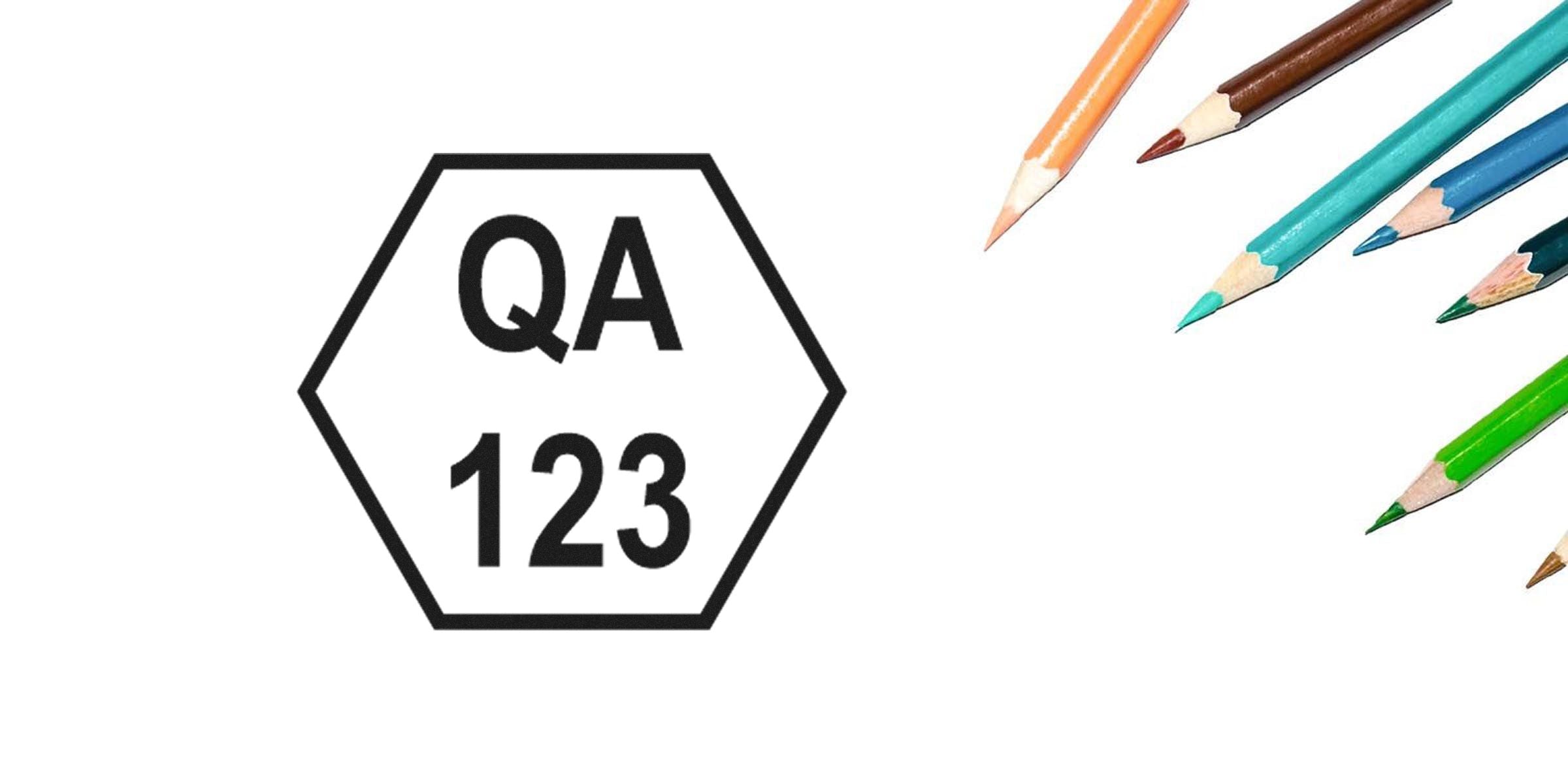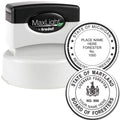Are you caught between deciding on an inspection stamp vs sticker labels for your company’s quality checks? You’re not alone. In many businesses, you need a fast, visible mark that confirms your product or process has been approved. Yet, choosing the right approach can be trickier than it sounds when you factor in durability, cost, and convenience.
That’s where this guide comes in. By the end, you’ll know exactly how an inspection stamp compares to a sticker label, and which one best fits your workflow. At ESS—your top-notch supplier for custom stamps, inspection stamps, QA stamps, and QC stamps—you’ll find top-quality products, outstanding customer service, plus a fast turnaround that ensures you never miss a beat. We’ve been family owned and operated since 1964, so you can trust we’ve learned a thing or two about reliable marking solutions over the years!
Clarify The Terms
Before diving into pros and cons, let’s make sure we’re on the same page about what we mean by inspection stamps and sticker labels. In essence, both serve a similar purpose: they show that a product, part, or process has passed a quality inspection.
- An inspection stamp uses ink (often a specialized ink, in some cases) and a marking device. Think of it like a traditional rubber stamp—but built for industrial or professional conditions.
- A sticker label, on the other hand, is a self-adhesive piece of paper or synthetic material. Once you peel and stick it on, it stays in place to signal approval.
Understand Inspection Stamps
How They Work
Inspection stamps typically come in various shapes—round, rectangular, square—carrying clear text or symbols that confirm your item passed QA (quality assurance) checks. You press the stamp onto an ink pad (or use a self-inking model), then apply it directly to your product or relevant paperwork. Because of the pressure-based marking, you get a crisp impression that doesn’t easily smear if you choose a quick-drying or specialized ink.
You’ll also find specialized inks designed to dry on surfaces like metal or plastic without fading. That makes an inspection stamp a good choice when you want a mark that lasts and tracks your internal quality standards. If you plan to incorporate branding in your design, you might explore a company logo inspection stamp for a more personalized touch. It’s a neat, professional way to unify your brand identity across production runs.
Key Advantages
What sets an inspection stamp apart from a sticker label? For starters, stamps tend to be highly cost-effective if you’re applying large volumes of marks each day. There’s no ongoing expense for label sheets. Once you have your stamp and a quality ink supply, you’re good to go for thousands of impressions.
Additionally, an inspection stamp can be faster to apply. Just line up your stamp, press down, and move on! You don’t need to peel a label or ensure it’s perfectly straight. Plus, you can stamp on multiple surfaces—metal, plastic, cardboard, or even glass—using the right kind of ink. Thanks to that versatility, you might reduce your overhead if you need to mark an assortment of items in quick succession.
Still, it’s important to consider your environment. Certain settings, such as a dusty or wet production area, can interfere with how well ink adheres. You also have to think about whether your staff are comfortable with the manual stamping action. But if your environment is fairly controlled or your items are easy to stamp, an inspection stamp can feel like a no-brainer.
Explore Sticker Labels
Printing And Design
On the other side of the discussion, sticker labels are a quick solution. You design and print them—either in-house or through a printing service—and then peel and apply them directly to each inspected piece. Like stamps, they can display text, brand logos, barcodes, or color codes that show an item is cleared for use. They also come in different materials, ranging from paper-based labels to water-resistant vinyl.
One immediate advantage of sticker labels is that they’re effortless if you want to include more extensive details. Need to add a date code or multiple lines of text? Designing a sticker with bold fonts and bright colors might help it stand out and provide more info in one shot.
Key Advantages
Stickers can be convenient for production lines that require quick scanning or that already operate with a specific labeling system. For example, if you have a small machine that prints labels with real-time dates, you can instantly generate them on demand. Then you hand them off for application. This approach often works best when your environment is too rough on inks (like extremely oily surfaces) or when you’re dealing with highly glossy packaging difficult for stamping.
However, you do need an ongoing supply of stickers. While the per-item cost might be modest, it adds up over the long haul—especially if you’re going through thousands of labels monthly. You’ll also have to account for potential issues with labels peeling off, fading, or tearing, which could mean repeating your labeling or dealing with confusion if a sticker goes missing.
Compare Key Factors
When deciding between an inspection stamp vs sticker labels, it helps to break down the essentials: durability, cost, customization, and overall speed of application. Below is a quick snapshot of how each option stacks up.
| Factor | Inspection Stamp | Sticker Label |
|---|---|---|
| Durability | Highly durable, especially with appropriate stamping ink | Varies depending on label material, adhesive can degrade over time |
| Cost (Long-Term) | Often more economical once you buy the stamp and ink | Continuous cost for sticker rolls or sheets |
| Customization | Easy to get custom text, logos, or designs engraved or molded | Simple to print different designs, can include color photos, barcodes, etc. |
| Application Speed | Quick once you master the motion, no peeling or alignment needed | Peeling off backing takes time, but can be fast for seasoned workers |
| Surface Suitability | Great for absorbent or slightly textured surfaces (with correct ink) | Generally sticks to smooth surfaces, less effective on rough or greasy areas |
| Environment | May not be ideal for extremely dusty or oily conditions | Adhesive might fail in humidity, heat, or handling stress |
Durability
Stamps can hold up better if you have the right ink for your specific material. Sticker labels can wear at the edges or peel away after extended exposure to heat or moisture. On the flip side, if your products never face those conditions, having a label might be perfectly sufficient.
Cost
If you’re stamping hundreds or thousands of items daily, you’ll probably notice that a one-time cost for a custom stamp plus ink refills can be very wallet-friendly. Stickers, while easily reprinted, rack up ongoing expenses. One tip is to calculate your estimated volume for the year, then compare the total cost of stamps and ink versus printing runs for stickers.
Customization
You can get fancy with either choice. For stamps, you can request specialized text or images, even an elaborate brand mark. For labels, design possibilities are nearly endless because you can print multi-colored imagery or even scannable data codes. Think about how streamlined your production line needs to be: do you want to adapt your design frequently, or is a single design enough for most of your jobs?
Speed And Convenience
Stamps might feel faster during application, but any misalignment on the first attempt leaves behind a blurred mark. Stickers are straightforward, though you might find that constantly peeling them slows you down more than you expected. Still, in certain environments, a simple peel and stick—especially with pre-cut shapes—can be done in seconds.
Choose The Best Fit For You
You’ve mulled over the differences, but how do you settle on the perfect solution? Start by asking yourself a few key questions:
- Do you need to change your inspection mark often (e.g., adding batch numbers or dates)?
- Will your products face harsh environments like moisture, heat, or frequent handling?
- Are you focused on long-term cost efficiency or short-term convenience?
- Is your workforce more comfortable with stamping or labeling?
If you answered yes to frequent changes or require a bigger variety of messages (like shifting from an “Approved” mark to a “Rejected” mark), stickers might be simpler. You can design a new layout at any moment and print just the quantity needed. If, however, you want a reliable way to mark an item—without worrying about labels peeling off or ongoing supply needs—a sturdy inspection stamp might check all your boxes. Either way, it’s worth exploring a bit of hands-on testing with actual products.
Why ESS Is Your Go-To Supplier
By now, you understand the differences and the finer points of inspection stamp vs sticker labels, but you might still wonder where to find the best custom inspection or QA stamp. That’s where ESS can help!
We’ve been in the stamping game since 1964, and as a family-owned business, we take pride in offering a personal, friendly experience from start to finish. Our team provides:
- Expertise in designing custom stamps, from text-only to logos.
- High-quality materials that ensure your stamp lasts under heavy use.
- Fast turnaround, so you never have to wait weeks for a custom order.
- Stellar customer service to walk you through each step, from choosing the right ink to finalizing your design.
Because we know every production setting is different, we’ll work with you to recommend the best ink type or stamp style for your scenario. If you want to incorporate your brand into your stamp, we can whip up a professional company logo inspection stamp that showcases your unique identity. Our commitment is to deliver a product that meets your needs and stands up to the demands of daily use.
Frequently Asked Questions
Below are a few of the most common questions people ask when mulling over inspection stamps versus sticker labels.
How long does an inspection stamp usually last?
A well-made inspection stamp can provide thousands of impressions before needing new ink. The actual lifespan depends on factors like frequency of use and whether you store it properly (away from excessive heat or moisture).Are sticker labels always cheaper at small volumes?
If you’re dealing with small quantities, sticker labels might cost less overall in the short term. At larger scales, though, the ongoing expense of printing more stickers can add up, making a stamp more economical over time.Can I use an inspection stamp on plastic or metal?
Yes, with the correct ink. Many specialized inks adhere well to non-porous surfaces such as metal, plastic, or glass. Just be sure to pick an ink compatible with your specific material.Do sticker labels work in extreme environments?
Some labels are designed to hold up in harsh conditions, but it depends on the adhesive and label material. If you’re operating in very high humidity, extreme heat, or dusty areas, it’s crucial to select labels rated for those conditions—or switch to a stamp that uses a more resilient ink.How often can I change a custom stamp’s design?
Once a stamp is manufactured, altering it isn’t as quick as printing new stickers. If you regularly switch up designs for multiple product lines, you may need separate stamps or invest in a stamp with interchangeable components. On the plus side, once you have the right stamp, you can use it repeatedly for that specific design!
Final Thoughts
So, which option suits you best? If your focus is on durability and cost efficiency over time, inspection stamps are a solid bet. If you need flexible designs that can change at any moment, sticker labels might be the way to go. Either route you choose, it comes down to how you plan to use your marking tools and the environment your products will face.
Still need a helping hand? Reach out to ESS for guidance on all things stamping—from selecting the best ink for your workflow to crafting a personalized inspection stamp that looks sharp and keeps your brand on point. We can’t wait to help you streamline your QA process.


















